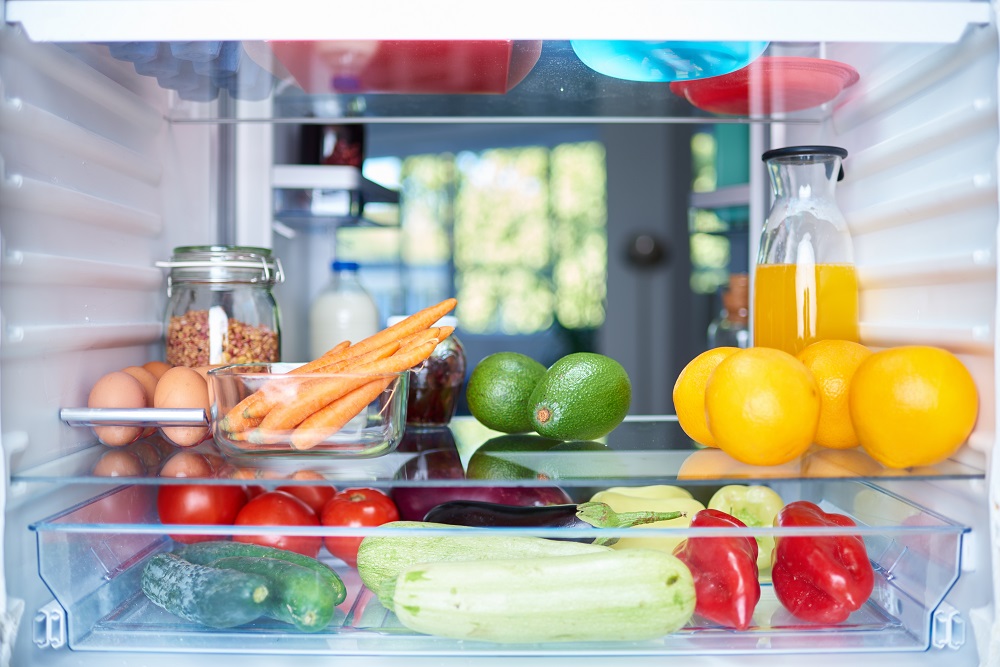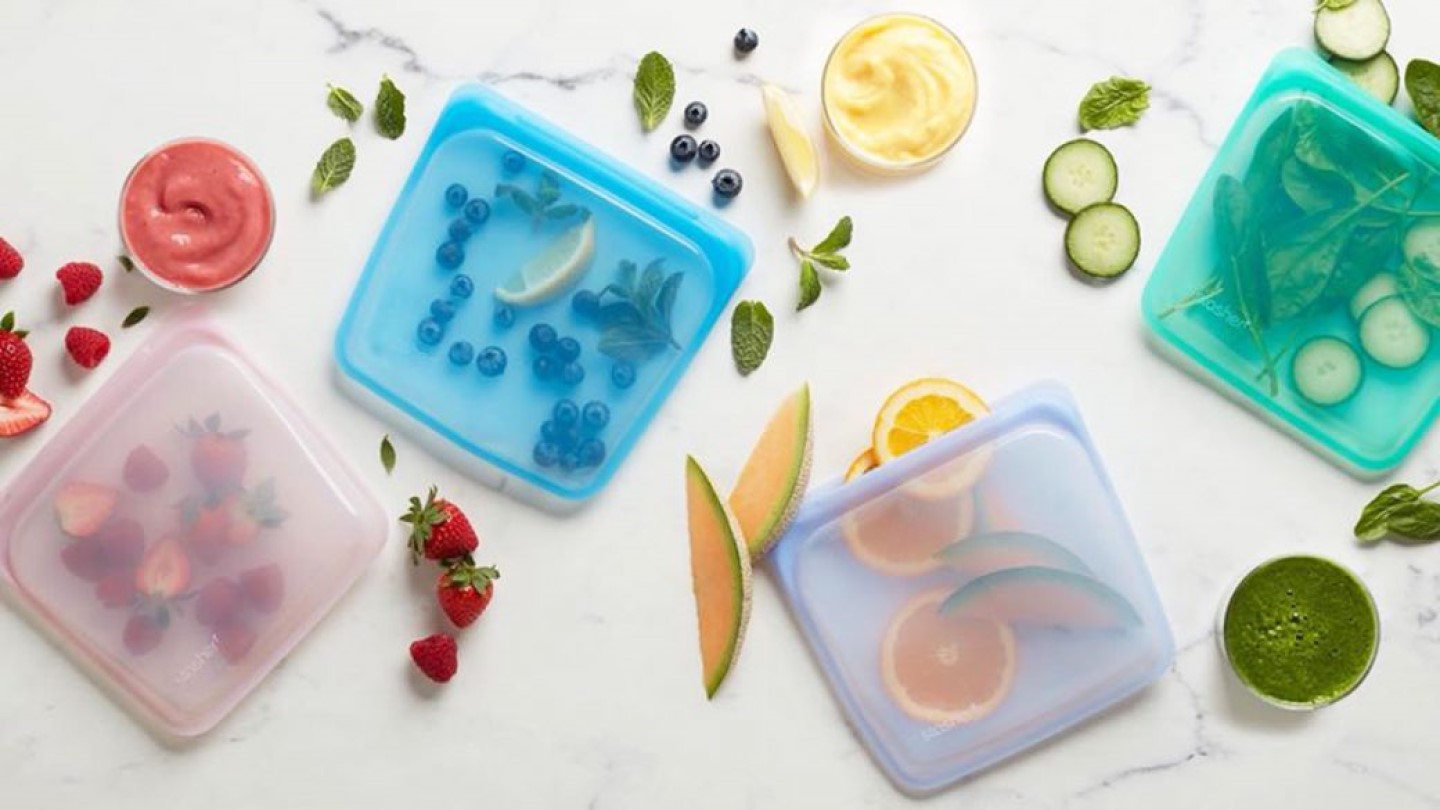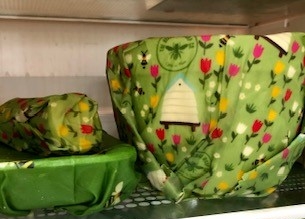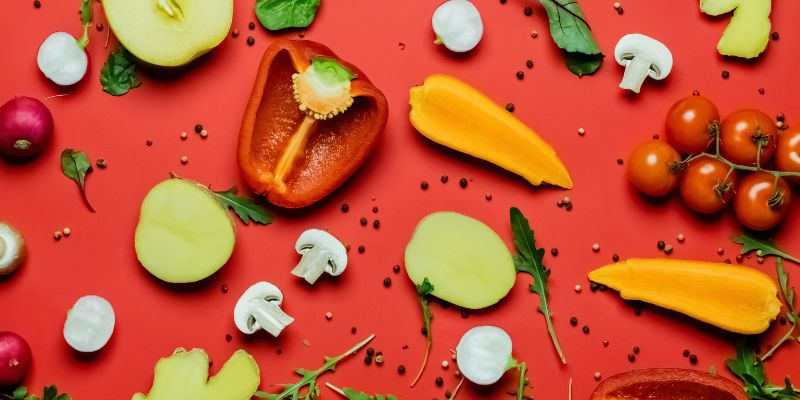How to store food in the fridge to keep it fresh
According to WRAP, UK households waste seven million tonnes of food each year, five million of which is edible. Organising your fridge may seem like a mundane job, but it can drastically reduce your waste and keep your food fresher for longer which keeps your hygiene up and your shopping bill down.
Let’s start with the basics. The Food Standards Agency (FSA) recommend that your fridge should be between three and five degrees Celsius. Cleaning your fridge is also super important and it’s suggested that you give it a good wash with soap and water, or diluted bleach every three months.
People often want to pack their fridge as full as possible to make the most of the energy being used but this can cause your fridge to work harder than it needs to. Too full and all the food blocks the flow of air but too empty and it’s harder to keep cool. Instead, aim for three quarters full. To achieve maximum organisation, storing food in a practical way can help your fridge to maintain good air circulation and even temperature.
How to correctly organise your fridge
- Top shelf – this is the warmest part of your fridge so ready-to-eat, leftover items and herbs are best placed here.
- Middle shelves – dairy (milk, butter, and yoghurts).
- Bottom shelf – this is the coldest part of your fridge where raw meat and fish should be kept. Placing raw food here minimises the risk of cross-contamination and ensures no excess juice drips onto anything else.
- Inside the door – this is also one of the warmest parts of the fridge so contrary to popular belief, placing milk here isn’t the best option. Rather, use this space for condiments and juice (that don’t mind temperature fluctuation).
- Fruit and vegetables – most newer fridges have separate drawers at the bottom of the fridge. Try to keep fruits and vegetables apart because some fruits give off ethylene, a chemical which can cause other fruit and vegetables to go off quicker.
We’re all guilty of forgetting a couple of things at the back of the fridge and having to throw it out, but visibility is key. If you’re able to see everything clearly then you’re less likely to run to the shops to buy something that you actually already had a half-opened packet of. Organising everything ensures less stress and less mess!
Just like in the supermarket, make sure you’re rotating as you go along. So, keep all the shorter dates at the front and longer dates at the back to minimise waste. Additionally, once items have been removed from their packaging, it’s better to re-wrap it in a Beeswax Wrap than re-use the same packaging.

How to shop smarter to reduce waste
Don’t forget where it all starts – how you shop. Creating a meal plan for the week or simply having a list of what you eat most frequently allows you to shop smarter.
Also, try analysing your habits, if you buy a lot of fresh produce that goes off quickly and you end up wasting a quarter of it, try buying smaller amounts more frequently so you only buy what you need. Or try some of the following tips.
How to store vegetables to keep them fresher for longer
There’s a fine line between dehydration and too much moisture. Dehydration can cause limpness in leafy greens but too much moisture can cause wilting in some vegetables. Try not to store your salad and herbs at the back of the fridge as the temperature could dry them out and you could forget they’re lurking there!
To store your vegetables there are multiple options you can try depending on how much time you have and what equipment you have.
Stasher Bags
Eliminating the need for single-use plastic bags, Stasher Bags are endlessly reusable, self-sealing, sustainable storage bags designed to make your life easier in the kitchen – you can read more about them here. Use the Sandwich Stasher Bag or Half Gallon Stasher Bag to seal your vegetables inside, but not too tight so that air can still circulate inside. Make sure that the veg is dry before placing them inside to minimise moisture by loosely wrapping them in a tea towel.

Glass jars
Celery, kale, asparagus and carrots love to be kept in a glass jar, one third full of water. Similarly to a fresh bunch of flowers, simply trim the stems and place them in water. Fun fact: if your vegetables start going limp, they could just need a little soak. Make sure you change the water every few days to keep them fresher for longer; this method could increase their life up to three weeks.
Other vegetables such as potatoes, onions and squash are best stored in a cool dark place, like a cupboard. There’s much debate as to where avocados belong and honestly, it doesn’t matter if they’re placed in the fridge or on the counter.
In the freezer
Vegetables can also be frozen to minimise waste! This is a handy trick if you’re not going to get through them all in time. You can blanch them before which involves boiling the vegetables for a few moments and then adding them to a bowl of ice to keep them crisp. Either way, ensure that the vegetables are dry and store them in a Stasher Bag in the freezer and simply get them out when you need them – learn more using our ‘how to use your Stasher Bag’ guide.
If you’re a herb lover, no need to worry about using them all up. You can freeze the herbs with a little bit of olive oil in an ice-cube tray and pop them out when needed. Additionally, some fruit is actually better off bought frozen if it’s not in season to reduce the energy used in growing and transporting them.
Additionally, composting any odd bits of vegetables rather than throwing them in the bin reduces landfill and gives some nutrients back to Mother Nature.

How to store leftovers in the fridge
Not only do leftovers tend to taste better the following day, but it’s also an easy way to reduce food waste. Ideally, leftovers should be stored on the top shelf as they’re ready-to-eat and visible: they need to be consumed within two days so you can’t forget about them.
Leftovers should be stored in airtight containers like Stasher Bags, or in containers that you can use Non Plastic Beach BOLL**KS to Cling Film. However, separating it into portions will allow it to cool quicker and safer.
Although most bacteria is killed whilst cooking, some may remain and grow at room temperature so smaller portions reduce the risk. On that note, leaving space between leftover containers is important too so that airflow is maintained. Don’t forget to jot down the date on your container so you know how long it’s been in your fridge.
Explore our range of eco-friendly Kitchen products



as always impractical……dry your fruit and veg….including cut oranges etc? Leave air spaces…so a half full fridge..? Always seems to be written by a theorist not someone who actually has to run a family…